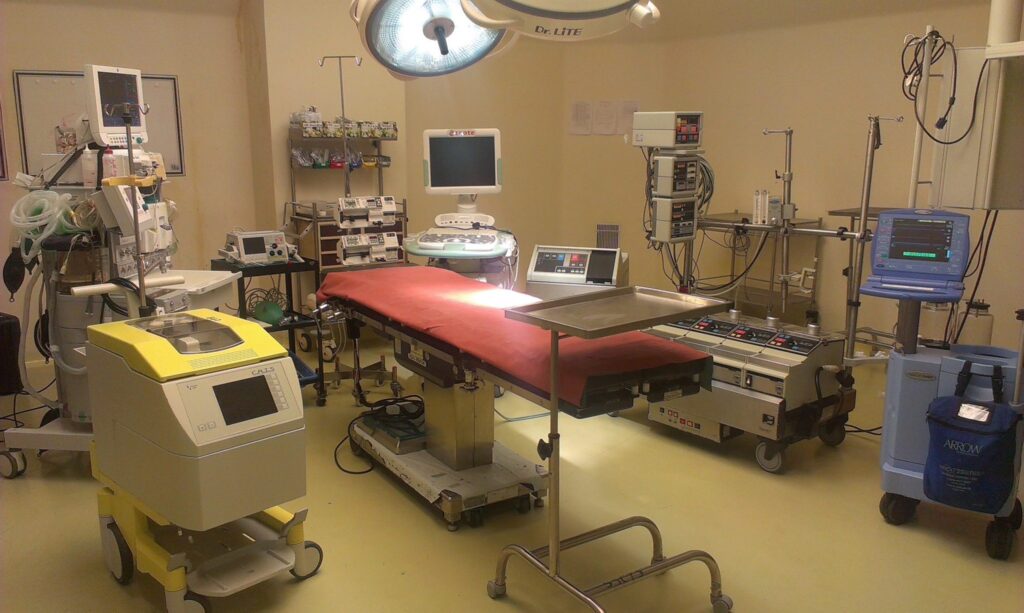The operating table is a specialized piece of equipment designed for surgical procedures. It provides a platform for the patient to lie on during surgery and is adjustable to allow for optimal positioning and access for the surgical team.
Modern operating table
Modern operating tables are typically made of stainless steel and are designed to be durable, easy to clean, and resistant to corrosion. They are often equipped with various features and accessories that allow for customization based on the needs of the surgical procedure.
One important feature of the operating table is the ability to adjust the position of the patient. This is important because different surgical procedures require different positions, such as lying on the back, stomach, or side. The table may also be tilted to allow for better access to specific areas of the body.
Another important feature of the operating table is the ability to add attachments and accessories to help support the patient during the procedure. This may include armrests, leg supports, and headrests. These attachments can help to prevent the patient from shifting or moving during the procedure, which can improve surgical precision and reduce the risk of injury.
In addition to supporting the patient, the operating table also supports the equipment used during the procedure. This may include surgical lights, anesthesia machines, and monitors. The table is designed to be stable and sturdy to ensure that the equipment remains in place during the procedure.
Overall, the operating table is a critical piece of equipment in the surgical suite. It provides a stable platform for the patient during surgery and allows for optimal positioning and access for the surgical team. The ability to customize the table with various attachments and accessories can improve patient comfort and safety during the procedure. With careful design and engineering, the operating table has become an essential tool in modern surgical care.